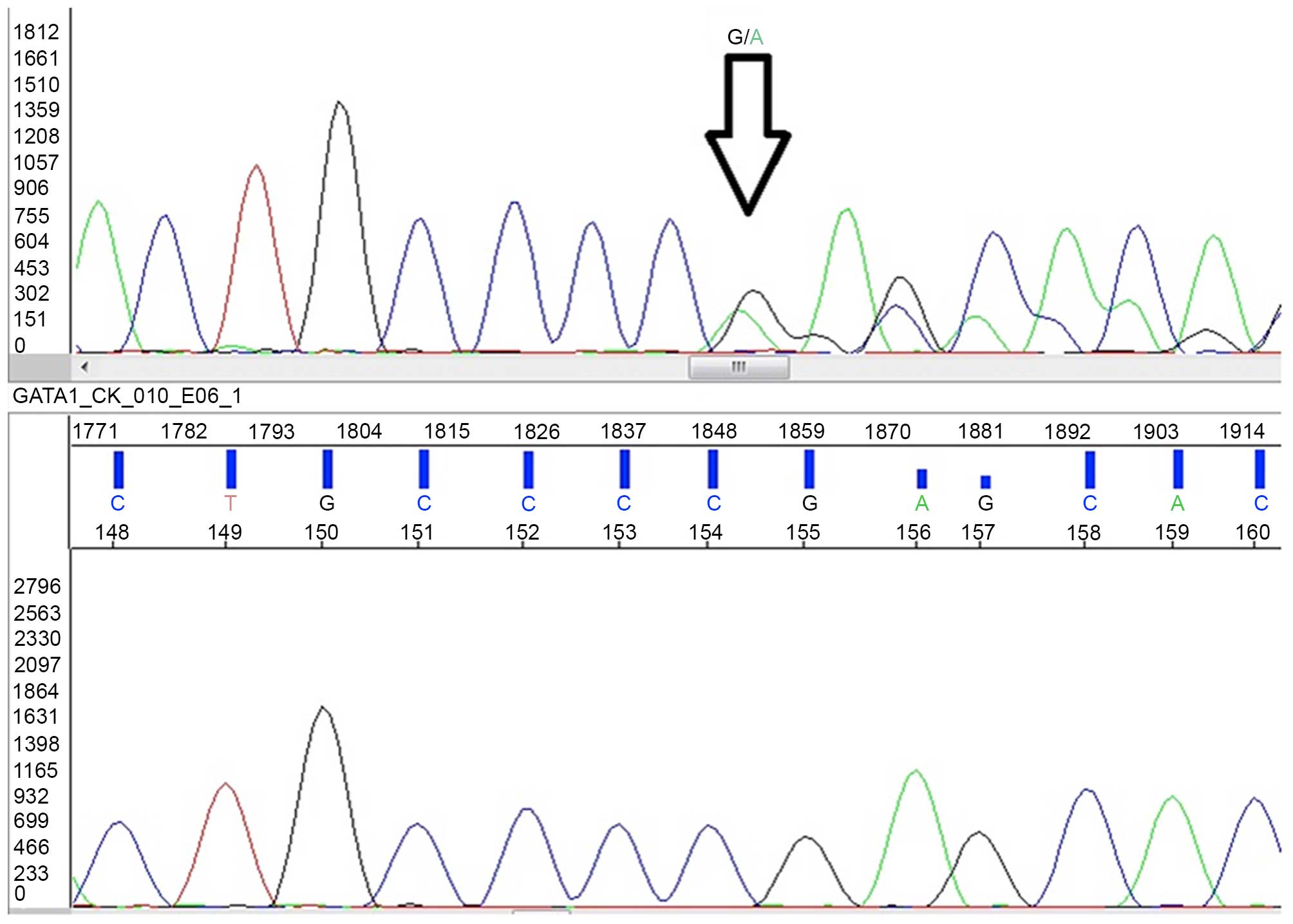Sometimes it is better to wait: First Italian case of a newborn with transient abnormal myelopoiesis and a favorable prognosis
- Authors:
- Published online on: November 21, 2016 https://doi.org/10.3892/ol.2016.5401
- Pages: 191-195
-
Copyright: © Salvatori et al. This is an open access article distributed under the terms of Creative Commons Attribution License.
Metrics:
Total
Views: 0 (Spandidos Publications: | PMC Statistics:
)
Total PDF Downloads: 0 (Spandidos Publications: | PMC Statistics:
)
Abstract
Congenital leukemia is rare disease with an incidence of one to five cases per million births. Transient abnormal myelopoiesis (TAM), also called transient myeloproliferative disorder, is a pre‑leukemia disorder that may occur in Down syndrome (DS) or non‑DS infants. TAM may enter spontaneous remission; however, continual monitoring is required, as this disorder has been observed to develop into acute megakaryoblastic leukemia in 16‑30% of cases. In the literature, 16 cases of TAM in non‑DS infants have been reported. The case presented in the current study is, to the best of our knowledge, the first case of an Italian non‑DS newborn presenting with clinical manifestations of acute leukemia at five days after birth, exhibiting a normal karyotype, trisomy 21 only in blast cells, and spontaneous remission. Chromosomal analyses on peripheral blood cells, bone marrow cells and dermal fibroblasts were conducted using a G‑banding technique, and fluorescence in situ hybridization (FISH) was used to identify the critical regions of DS. Amplification of GATA binding protein 1 (GATA1) exon 2 genomic DNA was performed using polymerase chain reaction. Cytogenetic analysis of 50 peripheral blood cells and dermal fibroblasts from the patient revealed a normal karyotype: 46, XX. Conversely, cytogenetic analysis of the patient's bone marrow revealed an abnormal karyotype 47, XX+21. In order to investigate this result, FISH was performed, which identified the presence of three signals in 70% of the cells and two signals in 30% of bone marrow cells. GATA1 sequencing revealed the substitution of a single base (c.150delG) in exon 2. Seven months after the initial analysis, FISH and cytogenetic analyses of the stimulated/unstimulated peripheral blood cells and bone marrow cells were performed, revealing that each exhibited diploid signals, as observed in a normal karyotype.













